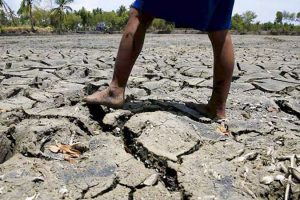
Marcos reactivates El Niño Task Force
By Kyle Aristophere T. Atienza, Reporter
PRESIDENT Ferdinand R. Marcos, Jr. has signed an order reactivating and reorganizing an inter-agency task force in the early 2000s that crafted policies to mitigate the effects of the El Niño weather pattern.
Executive Order (EO) No. 53, signed on Jan. 19, reactivates the El Niño Task Force, which will be headed by the secretary of national defense and monitor the implementation of short- and long-term programs under a national action plan that seeks to mitigate the impacts of El Niño, which began in March and continues to “exhibit signs of intensification.”
The task force may revise and update the Strategic El Niño National Action Plan, which was crafted last year and focuses on water security, food security, energy security, health, and safety.
It should coordinate with concerned agencies to “expedite the completion of all ongoing water infrastructure intended to cushion or mitigate the impacts of El Niño not later than the end of April 2024,” read part of EO 53.
It is tasked with coordinating with the Presidential Communications Office to come up with a massive information campaign to educate the public on El Niño, which brings warmer than usual weather conditions.
The President also ordered the establishment of an El Niño Online Platform, which will serve as a “centralized repository of a wide range of data, research, and information concerning El Niño, such as interactive maps and visualizations, as well as well-informed, data-driven plans and programs.”
El Niño will likely extend up to the second half of the year.
It is expected to lead to a significant increase in power demand, with the Energy department projecting the peak demand to hit 13,917 megawatts (MW) in the Luzon grid, 2,891 MW in Visayas and 2,584 MW in Mindanao.
In related a development, the Baguio Water District (BWD) is constructing 10 deep wells to ensure a steady water supply in the country’s summer capital when El Niño sets in.
BWD General Manager Salvador M. Royeca said each of these wells, funded through loans from the Development Bank of the Philippines (DBP), will produce 140 gallons per minute with a cumulative daily production of 8,000 to 10,000 cubic meters.
Mr. Royeca noted that BWD sourced funds amounting to P300 million from the Office of the President to construct a water catchment basin at the Busol watershed, aiding water supply during peak demand in the summer months.
About 90 percent of the water district’s potable water supply comes from its existing 68 deep wells and Mr. Royeca stressed the city’s need for more due to the growing population and demand. — with a report from Artemio A. Dumlao



